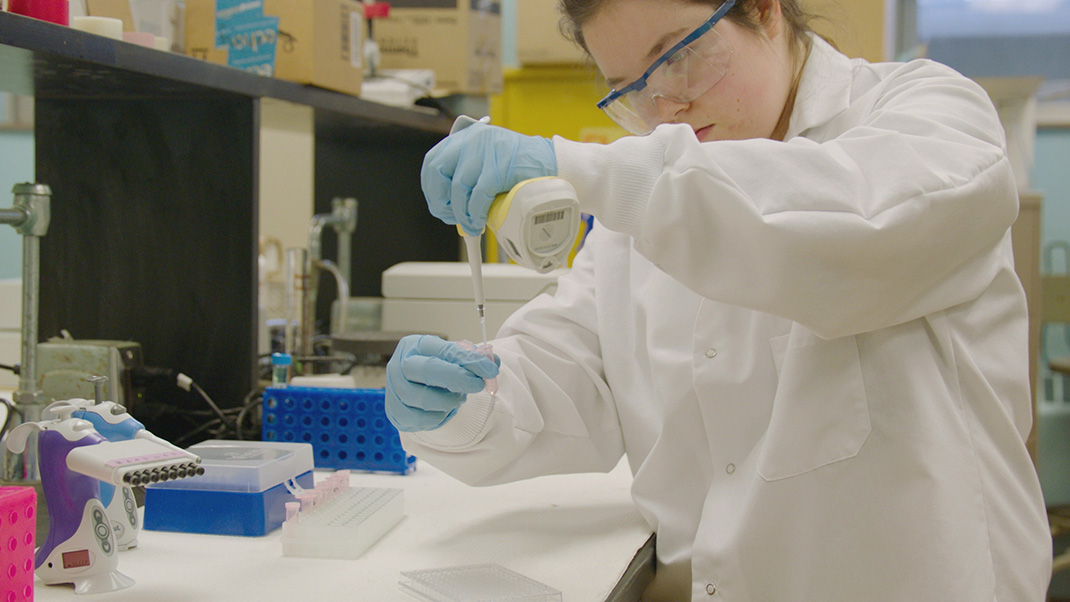John Tolley, May 27, 2020
What would you rather eat, a ribeye or a rutabaga? Tater tots or celery spears? Cheesy pizza or poached salmon? These questions are of the sort investigated at Purdue University?s unique SPIT (Saliva, Perception, Ingestion, and Tongues) Lab.
?We study spit, as well as flavor and sensation and taste, and why people eat what they eat,? explains SPIT Lab director Cordelia Running. ?How we're different from each other, and then how that leads us to make different decisions about what we want to eat. And then you compound that even further with how do you get people to eat what's good for them, but not take away the pleasure of eating what you enjoy.?
The field is one that Running, an assistant professor in the Department of Nutritional Sciences, notes is still in its scientific infancy. It has only been within the last few decades that we?ve begun to identify the receptors in our taste buds that pick up on salty, sweet, sour, and bitter flavors.
There is still much to be understood about how our mouths chemically identify and perceive flavors and how the sensations connect to neural pathways. Further, we are just beginning to explore the correlation between this chemical activity and what we know of the psychology of eating.
Much of what SPIT Lab researchers undertake sounds simple, almost deceptively so. They invite subjects to the lab to eat, but also to truly experience a certain food or flavor. They then probe that experience. The tricky aspect is recognizing how people are different from one another. Further still, understanding how does that difference come to bear on the experience.
From there things get a bit more personal, Running explains. ?We also spend a lot of time feeding people stuff and collecting the spit that they generate in response to it.?
This is all done in order to understand just what is healthy eating and how best to promote it. Changes in one?s diet or adherence to a specialized diet are already used as part of the treatment for a range of issues, from various cancers to metabolic conditions like diabetes to obesity itself. And, an expansion of diet-related treatments, which are relatively-affordable to implement, could save millions, possibly billions, in medical and insurance expenses.
The real problem in diet modification or restriction is combating the aversions to healthy foods that some people have. Finding out why those aversions arise is a foundational question for the SPIT Lab.
?It's so hard to get people to change their diets,? remarks Running. ?Even if we know exactly what a healthy diet is, even if we boil it down to something as fundamental as eating a larger proportion of vegetables and less of just about everything else, it's still hard. We know we should eat more vegetables. And yet we don't. Why is that? Some of that comes down to flavor; you know, people don't want to eat their vegetables. I don't want to eat my vegetables. I fully admit to that. And yet, that could prevent so much of what we spend our money trying to fix about our own bodies.?
One discovery they?ve made has been the significance of how rapidly a flavor appears upon your palette. For example, the quicker the salty sensation is activated, the saltier a person might perceive a foodstuff to be. So, for someone on a salt-restrictive diet, chemically altering how quickly salt shows up to the party could help lessen overall intake.
Or, take coffee, a beverage many people feel they need in the morning. Partially, that is because caffeine is a psychoactive drug that chemically encourages the human brain to crave it. If that same mechanism of action could be applied to, say, broccoli, people just might have a second helping.
For Running, who credits her field of study to the combining of her love of chemistry and her husband?s love of food, the driving desire of the SPIT Lab is a simple, yet profound one. ?I want food to taste better to people, so that they can be healthier. Food should taste good. Even when it's healthy for you.?







 See what's coming up live on B1G+ every day of the season at BigTenPlus.com.
See what's coming up live on B1G+ every day of the season at BigTenPlus.com. 